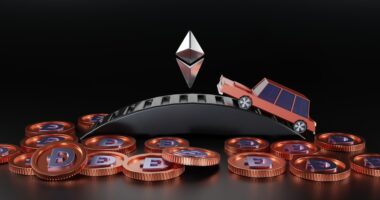Non-fungible tokens (NFTs) are unique digital assets that represent ownership or authenticity of specific items or content, such as artwork, music, videos, and social media posts. Unlike fungible cryptocurrencies like Bitcoin or Ethereum, which can be exchanged on a one-to-one basis, NFTs are non-interchangeable due to their unique properties. This distinctiveness is the source of their value and has led to increased interest and investment in NFT technology.
NFTs have become particularly popular in the art world, allowing digital artists and creators to sell their work directly to collectors without intermediaries. This has created new monetization opportunities for digital creations and challenged traditional concepts of ownership and authenticity in the art market. The technology has also found applications in other sectors, including gaming, music, and entertainment, where it is used to create unique and collectible digital assets.
As NFTs continue to gain prominence, understanding the concept of digital ownership and the mechanics of NFTs is crucial for comprehending their potential impact on the digital economy. The technology’s ability to verify ownership and authenticity of digital assets has opened up new possibilities for creators and collectors alike, potentially reshaping how we value and trade digital content in the future.
Key Takeaways
- NFTs are unique digital assets that represent ownership of a specific item or piece of content on the blockchain.
- Digital ownership through NFTs allows creators to monetize their work and gives buyers a sense of exclusivity and authenticity.
- NFTs work by using blockchain technology to create a digital certificate of ownership that cannot be duplicated or forged.
- Benefits of NFTs include increased revenue for creators and the potential for a more transparent and secure digital marketplace, while drawbacks include high energy consumption and environmental impact.
- Examples of NFT use cases include digital art, collectibles, virtual real estate, and even tokenized real-world assets, with potential for expansion into gaming, music, and more.
The Concept of Digital Ownership
Establishing Ownership and Provenance
NFTs address this issue by providing a secure and transparent way to establish ownership and provenance of digital assets. By tokenizing digital content, creators can create unique, verifiable records of ownership that can be bought, sold, and traded on blockchain platforms.
Redefining Value and Scarcity
Digital ownership through NFTs also challenges traditional notions of value and scarcity in the digital space. With NFTs, creators can imbue their digital assets with scarcity by creating limited edition tokens, thereby increasing their value and desirability among collectors.
A New Era of Digital Ownership
This has led to a redefinition of what it means to own digital content, as NFTs allow for the creation of unique, one-of-a-kind assets that can be owned and traded just like physical objects. As the concept of digital ownership continues to evolve with the rise of NFTs, it is important to understand how these tokens work and the underlying technology that powers them.
How NFTs Work

NFTs are built on blockchain technology, which is a decentralized and distributed ledger that records transactions across a network of computers. Each NFT is minted on a specific blockchain platform, such as Ethereum, and is assigned a unique identifier that distinguishes it from other tokens. This identifier serves as a digital certificate of authenticity and ownership, providing a secure and tamper-proof record of the asset’s provenance.
When a user purchases an NFT, the transaction is recorded on the blockchain, providing a transparent and immutable record of ownership. One of the key features of NFTs is their indivisibility, meaning they cannot be divided into smaller units like cryptocurrencies. This ensures that each token remains unique and retains its value as a whole.
Additionally, NFTs can contain metadata that provides additional information about the asset, such as its creator, creation date, and any associated royalties or rights. This metadata is stored on the blockchain alongside the token, further enhancing its provenance and authenticity. Overall, NFTs work by leveraging blockchain technology to create unique, verifiable records of ownership for digital assets, opening up new possibilities for creators and collectors alike.
Benefits and Drawbacks of NFTs
NFTs offer several benefits for creators and collectors alike. For creators, NFTs provide a new way to monetize their digital content by selling unique, one-of-a-kind assets directly to collectors without the need for intermediaries. This has the potential to democratize the art market and empower artists to take control of their own distribution and sales.
Additionally, NFTs allow for the creation of royalties that ensure creators receive a percentage of future sales whenever their NFTs are traded in secondary markets. On the other hand, there are also drawbacks to consider when it comes to NFTs. One of the main concerns is the environmental impact of blockchain technology, particularly in the case of Ethereum, which is the most popular platform for minting NFTs.
The energy consumption required for minting and trading NFTs has raised questions about the sustainability of this technology and its long-term viability. Additionally, there are also concerns about copyright infringement and intellectual property rights in the NFT space, as it can be difficult to verify the originality and authenticity of digital assets. As NFTs continue to gain traction, it is important to weigh these benefits and drawbacks to make informed decisions about participating in this emerging market.
Examples of NFT Use Cases
NFTs have found applications across a wide range of industries, showcasing their versatility and potential impact on the digital economy. In the art world, NFTs have enabled digital artists to sell their work directly to collectors as unique tokens, bypassing traditional galleries and auction houses. This has led to a surge in interest in digital art and has opened up new opportunities for artists to reach global audiences.
Additionally, NFTs have also been used in the music industry to create unique collectible assets such as albums or concert tickets, providing fans with exclusive digital experiences. In the gaming industry, NFTs have been used to create rare in-game items and collectibles that can be bought, sold, and traded among players. This has led to the emergence of virtual economies within games, where players can own and trade digital assets with real-world value.
Furthermore, NFTs have also been used in virtual real estate markets, where users can buy and sell virtual land or properties within decentralized virtual worlds. These examples demonstrate the diverse use cases for NFTs and highlight their potential to disrupt traditional business models across various industries.
The Future of NFTs

Expanding Digital Content and Platforms
This could lead to new forms of digital content that are specifically designed for tokenization as well as new platforms that cater to the growing demand for NFTs.
Immersive Digital Ownership and Interaction
Additionally, we may see increased integration of NFTs into virtual reality experiences, creating new opportunities for immersive digital ownership and interaction.
Sustainability and Mainstream Adoption
Furthermore, as blockchain technology continues to mature, we can expect improvements in scalability and sustainability that address current concerns about energy consumption and environmental impact. This could make NFTs more accessible and sustainable in the long run, opening up new possibilities for mainstream adoption.
Overall, the future of NFTs is likely to be characterized by continued growth and innovation as this technology reshapes how we perceive and interact with digital assets.
Conclusion and Considerations for NFT Participation
In conclusion, NFTs represent a groundbreaking development in the world of digital ownership, offering new opportunities for creators and collectors to engage with unique digital assets. While there are benefits to be gained from participating in the NFT market, it is important to carefully consider the potential drawbacks and risks associated with this emerging technology. As with any investment or participation in new markets, it is crucial to conduct thorough research and due diligence before getting involved with NFTs.
Additionally, it is important for creators to consider the long-term implications of tokenizing their work as NFTs, including issues related to copyright, royalties, and intellectual property rights. For collectors, it is essential to verify the authenticity and provenance of NFTs before making purchases to ensure that they are acquiring genuine assets. By approaching NFT participation with a critical mindset and an understanding of the underlying technology, individuals can make informed decisions about how to engage with this exciting new frontier in digital ownership.
If you’re interested in learning more about the potential career opportunities in the NFT space, check out this article on NFT-Jobs.com. The article provides insights into the growing demand for professionals with expertise in blockchain, digital art, and NFT technology. It also offers valuable tips for those looking to break into the industry and make a meaningful impact in the world of digital ownership.
FAQs
What is an NFT?
An NFT, or non-fungible token, is a digital asset that represents ownership or proof of authenticity of a unique item or piece of content using blockchain technology.
How do NFTs work?
NFTs work by creating a digital certificate of ownership for a specific item or piece of content, which is then stored on a blockchain. This certificate can then be bought, sold, or traded like any other form of property.
What can be turned into an NFT?
Almost any digital file can be turned into an NFT, including artwork, music, videos, tweets, and even virtual real estate in online games.
How are NFTs different from cryptocurrencies like Bitcoin?
While both NFTs and cryptocurrencies use blockchain technology, NFTs are unique and indivisible, representing ownership of a specific item, whereas cryptocurrencies are fungible and can be exchanged on a one-to-one basis.
Are NFTs environmentally friendly?
The process of creating and trading NFTs can have a significant environmental impact due to the energy-intensive nature of blockchain technology.





